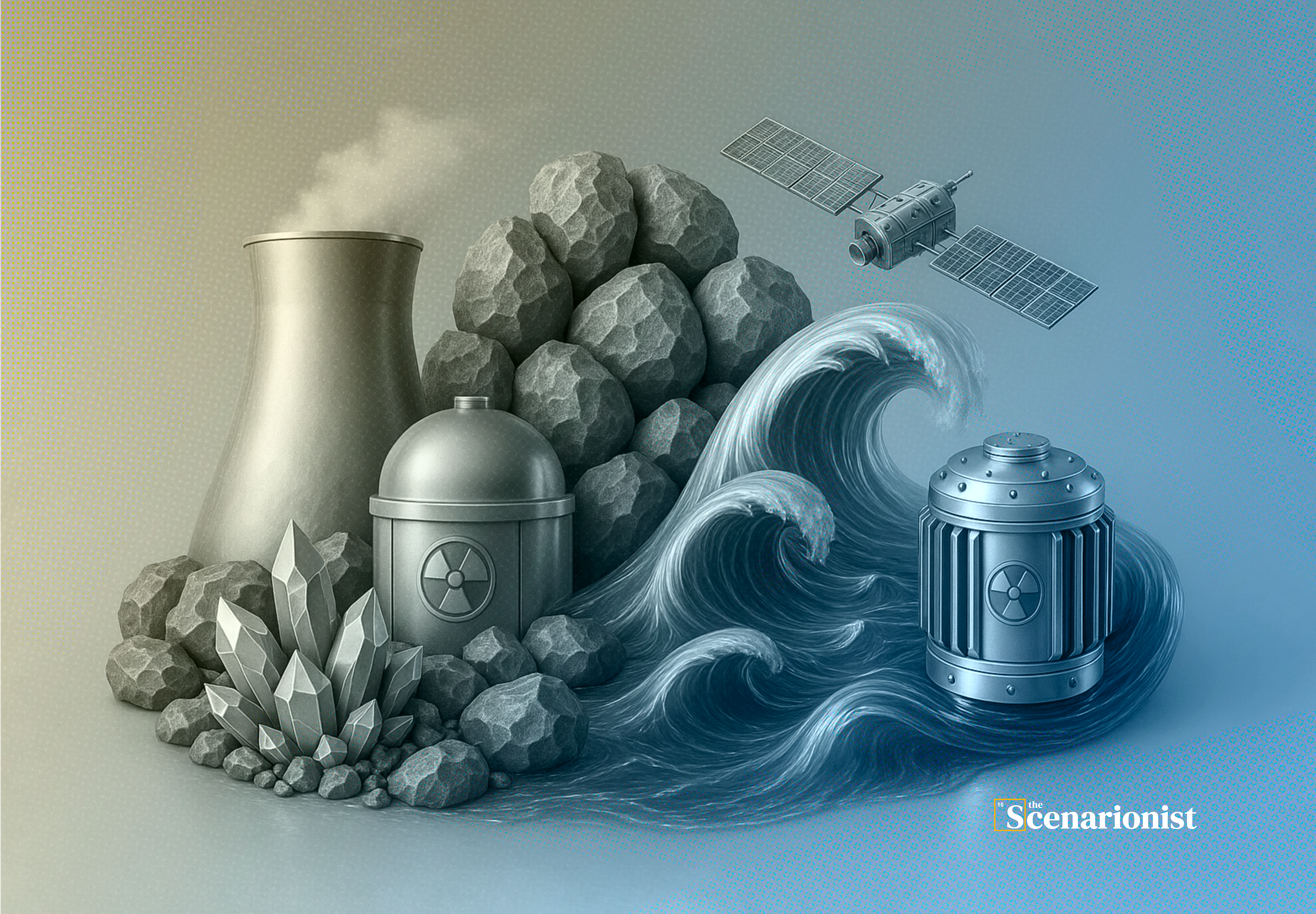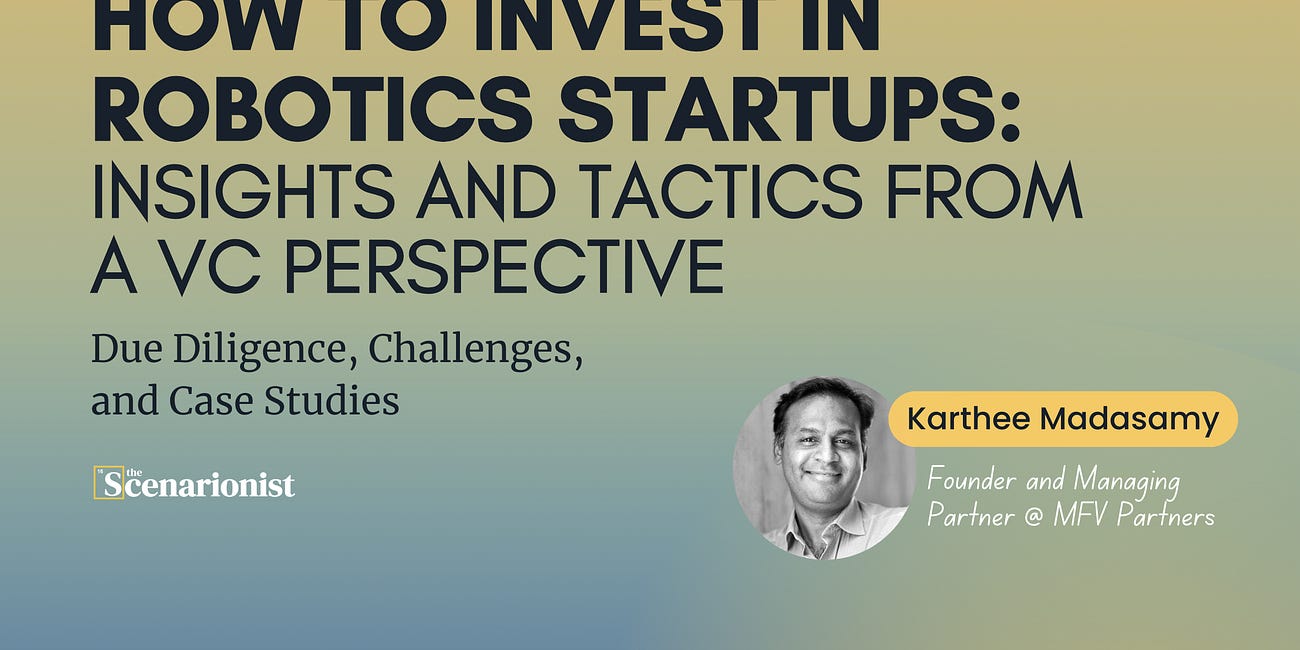☢️ Microreactors Go Public; 🪨 1st Rare Earth Recycling Plant in US; ⚛️ Nuclear Fusion Rocket; 🧱 Green Cement from Waste; 🌊 Deep-Sea Mining Push; 🚢 Naval Autonomy Scales | Deep Tech Briefing #58
Weekly Intelligence on Deep Tech Startups and Venture Capital.
Thanks for reading Deep Tech Briefing, our weekly intelligence on deep tech startups and venture capital. If you like what you see, I encourage you to subscribe to all our pieces here.
Dear Friends,
Spend enough time around deep tech, and you learn that real transformation rarely announces itself. It accumulates—quietly, steadily—until the world it shapes feels inevitable.
This past week, that quiet force gathered momentum across several fronts.
In critical materials, a new chapter is opening. Rather than chasing virgin extraction, initiatives are focused on building industrial-scale recycling of legacy systems—magnets, turbines, motors—turning scrap into strategic inputs. What matters isn't just the volume, but the shift in mindset: achieving supply chain security through circularity, not dependence. Facilities are being financed entirely with internal resources, signaling a notable confidence—one rooted not in speculation, but in predictable throughput and contracted offtake.
Energy innovation, too, is inching closer to reality. Fusion technologies, once the preserve of sprawling billion-dollar experiments, are being reimagined through modular architectures that emphasize parallelism, efficiency, and deployability. The physics remains formidable, but the commercial model is changing—designed to fit within today’s infrastructure footprint rather than demanding entirely new ecosystems. It's a pragmatic fusion of ambition and realism, a pivot from singularity to scalability.
Defense autonomy is following a similar path. Rather than futuristic visions of fully sentient machines, a quieter revolution is underway: mid-sized unmanned systems, optimized for modularity, attritability, and swarm behavior. These platforms aren't built for press conferences. They're designed for contracts—built to operate persistently, flexibly, and affordably, even under degraded conditions where GPS, communications, and perfect situational awareness are luxuries, not assumptions.
The agricultural and food sectors are also undergoing an invisible retrofit. Carbon removal technologies once confined to academic papers are being embedded directly into supply chains, offering permanent sequestration without disrupting farm economics. The most meaningful moves aren't flashy; they are subtle, systemic shifts—embedding new capabilities into the everyday rhythms of grain, soil, and water.
In manufacturing, the shift from carbon liability to carbon asset is materializing. Captured emissions are no longer a symbolic gesture—they are being mineralized into building-grade materials at industrial scale. Elsewhere, new forms of battery technologies are shedding dependence on critical minerals, moving closer to commercial viability with faster charging, improved safety, and higher recyclability.
The broader signal here is unmistakable: the deep tech cycle is no longer driven by narratives of disruption. It is powered by the hard, patient work of infrastructure-building.
And importantly, the battleground is shifting.
Today’s frontier is not intellectual novelty alone. It is manufacturability. Scalability. Supply chain resilience. Those who can execute under constraint—of capital, of labor, of regulation—will be the ones who shape the next industrial era.
The deep tech economy is no longer a sideshow to software. It is becoming a primary arena of industrial and geopolitical competition. And it is rewarding a different kind of courage: the courage to build what others only imagined.
As this week’s signals show, the groundwork is being laid—not for the next app, but for the next phase of civilization’s infrastructure.
Those who recognize this shift early will not just invest in the future. They will help build it.
Let’s dive in.
✨ For more, see Membership | VC Guides | Insights | Deep Tech Catalyst
In Today's Briefing:
The Big Idea – A $20M rare earths recycling move reframes U.S. critical mineral supply chains—circular, local, resilient.
The Key Updates – Fusion moves toward modular energy systems. Naval autonomy scales fleets. Microreactors pursue SPAC paths. Domestic uranium enrichment reboots. Carbon insetting embeds in agriculture. Polymer batteries bypass lithium. Solar robots tackle weeding. Space reentry validates milestones. AI ingredients scale commercially. Sovereign satellites rise. Warehouse robotics deepens. Fusion rockets advance.
Deep Tech Power Plays – U.S. regulators back new microreactor fuels. A deep-sea mining push secures critical minerals. Spain accelerates defense spending to 2% of GDP.
Breakthroughs and Discoveries – Dual-battery EVs, precision robo-pollinators, warehouse autonomy, intuitive robots, green cement from fly ash, biomass valorization, faster lithium extraction, recycled aramids, defense-ready quantum, and solid-state batteries near scale.
How to Invest in Robotics Startups: Insights and Tactics from a VC Perspective
While software scales at the speed of code, robotics startups are playing a different game—one grounded in physical systems, supply chains, and real-world deployment.
But the market is shifting.
AI is accelerating. Hardware is maturing. And robotics is stepping into the spotlight—not as a moonshot, but as a viable, fundable frontier.
Still, turning robotics innovation into venture-scale opportunity requires a deeper understanding of what truly drives success.
In this episode of The Scenarionist’s VC Guide series, Karthee Madasamy, Founder at MFV Partners, shares actionable frameworks and real-world insights from years of investing at the intersection of AI, hardware, and industrial transformation.
What You’ll Learn in This Edition:
🔹 From Flashy to Fundable – What VCs really look for in early-stage robotics startups beyond the prototype.
🔹 System Design as Moat – Why integration, not invention, often defines scale.
🔹 The Real Bottleneck Isn’t Hardware – How software and system architecture create or kill scalability.
🔹 Milestones That Matter – Mapping credible progress from alpha builds to deployed robots.
🔹 Valuation Without Revenue? – How investors assess traction when cash flow is still on the horizon.
🙏🏻 A big thank you to Karthee for distilling years of deep tech investing into insights that are both actionable and inspiring.
✅ If you’re new to The Scenarionist, our VC Guides help you stay ahead—with the models, mindsets, and metrics that matter in deep tech investing. All drawn from real-world wisdom, straight from the best.
Interesting Reading:
The deeper you dig, the weirder, wider, and more telling the world of deep tech becomes. Here are a few standout reads from this week:
Venture debt faces tariff volatility, but some startups are better positioned than others – Tariffs are reshaping venture debt markets, offering a revealing stress test for growth-stage resilience. PitchBook
The New Space Race: Competing for Commercial Leadership in Space – As the next space race accelerates, commercial ecosystems—not just rockets—may determine the winners. Progressive Policy Institute
China-led lunar base to include nuclear power plant on moon's surface -space official – A nuclear-powered lunar base signals China’s long-term ambitions—and prompts new strategic calculations. Reuters
HHS, FDA Announce Intent to Phase Out Certain Petroleum-Based Ingredients in Foods – A regulatory pivot that could reshape supply chains from farm to shelf. FDA
Fusion Industry Association Launches Fusion Spacecraft Propulsion Roadmap – Fusion propulsion is moving from theory to roadmap, redefining the economics of interplanetary travel. Fusion Industry Association
Elon Musk’s Neuralink Said to Eye Fundraising at $8.5 Billion Valuation – Neuralink’s next move could signal how close we are to unlocking human-machine convergence. Bloomberg
Trump's executive orders are boosting VC interest in defense tech – A surge of venture capital into defense signals deeper realignment at the intersection of policy and tech. Business Insider
NATO's Rutte calls for 'quantum leap' as Europe boosts defence investment – Europe’s defense investment strategy is expanding, with quantum capabilities firmly in its sights. Reuters
Industry groups in Oman, Netherlands, Germany strike green hydrogen deal – Cross-border hydrogen initiatives are beginning to materialize into real-world supply chains. Reuters
Crossover US funds decrease venture startup investments in Q1 – A softening crossover market may hint at new liquidity challenges ahead for startups. PitchBook
Michael Grimes Builds Trump-Era Investment Accelerator – A bold play at the nexus of finance, tech, and policy could redefine venture deal flow in the next cycle. The Wall Street Journal
Tariff turmoil may have killed the tech M&A market’s comeback – M&A recovery hopes are facing fresh headwinds as protectionism reshapes market dynamics. TechCrunch
We must finance a new wave of industrialization in the US – Industrial reinvention is no longer optional; strategic financing could determine its success. American Banker
EV battery maker Northvolt failed after blowing through $15 billion. This US rival thinks it won't suffer the same fate – Northvolt’s collapse exposes the pitfalls of aggressive vertical integration. Business Insider
Before Go Ahead:
Deep Tech Briefing is just one part of The Scenarionist experience. To enjoy the full experience, become a Premium Member!
The Scenarionist Premium is designed to make you a better Deep Tech Founder, Investor, and Operator. Premium members gain exclusive access to unique insights, analysis, and Venture Guides with the wisdom of the world’s leading Deep Tech thought leaders. Invest in yourself, and upgrade today!
The Big Idea: Inside the $20M Bet That Could Rewrite America’s Rare Earths Supply Chain
By now, we know...The conversation around rare earths and critical minerals has clearly shifted from specialized forums to a central focus of industrial policy. For Western economies, growing reliance on supply chains—over 70% of rare earth processing controlled by China—has become a strategic concern that can no longer be overlooked.
This supply imbalance has led governments and corporations alike to explore domestic alternatives and recycling models capable of mitigating geopolitical and economic risks.
Within this context, this week brought the announcement from Cyclic Materials, a Canadian startup backed by investors such as BMW and Glencore, that it will build its first $20 million commercial plant in Arizona. The facility, expected to be operational by 2026, will process around 25,000 metric tons per year of scrap sourced from electric vehicle motors, wind turbines, medical imaging equipment, and data centers, producing approximately 750 metric tons annually of recovered magnets, along with copper, steel, and aluminum.
Several aspects make this move notable.
First,







